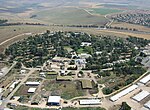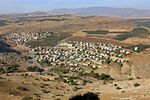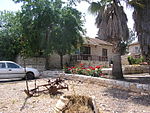Battle of Hattin
1180s in the Ayyubid Sultanate1180s in the Kingdom of Jerusalem1187 in AsiaBattles involving the AyyubidsBattles involving the Kingdom of Jerusalem ... and 7 more
Battles involving the Knights HospitallerBattles involving the Knights TemplarBattles involving the Principality of AntiochBattles of SaladinConflicts in 1187Principality of GalileeTrue Cross

The Battle of Hattin took place on 4 July 1187, between the Crusader states of the Levant and the forces of the Ayyubid sultan Saladin. It is also known as the Battle of the Horns of Hattin, due to the shape of the nearby extinct volcano of that name. The Muslim armies under Saladin captured or killed the vast majority of the Crusader forces, removing their capability to wage war. As a direct result of the battle, Muslims once again became the eminent military power in the Holy Land, re-capturing Jerusalem and most of the other Crusader-held cities and castles. These Christian defeats prompted the Third Crusade, which began two years after the Battle of Hattin.
Excerpt from the Wikipedia article Battle of Hattin (License: CC BY-SA 3.0, Authors, Images).Battle of Hattin
Galil Tachton Regional Council
Geographical coordinates (GPS) Address Nearby Places Show on map
Geographical coordinates (GPS)
| Latitude | Longitude |
|---|---|
| N 32.803611111111 ° | E 35.444444444444 ° |
Address
Galil Tachton Regional Council
North District, Israel
Open on Google Maps









